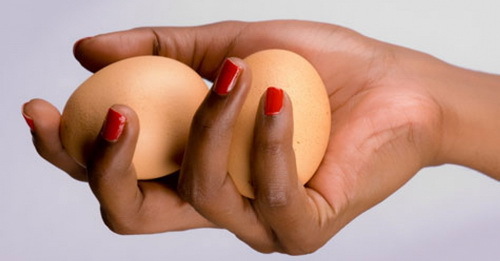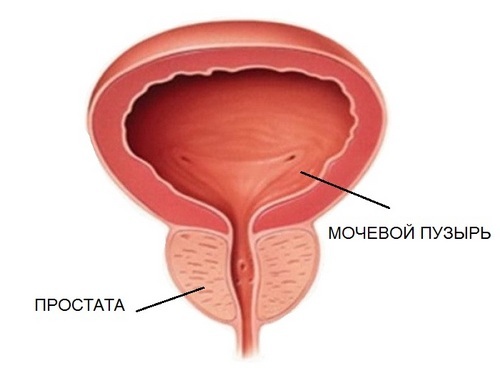Signs and treatment of chronic pelvic pain syndrome
Syndrome of chronic pelvic pain( CPPS) is a collective name for several pathological conditions, united by a common symptom: permanent or periodic discomfort in the pelvic area.
Typically, chronic pelvic pain is understood as acute or chronic prostatitis, but to reduce everything to one single disease is fundamentally wrong. It is necessary to understand the issue in more detail.
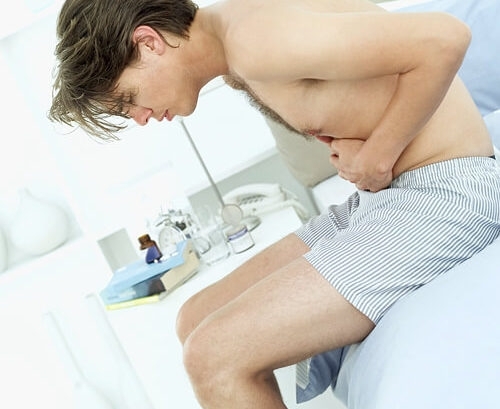
The most common cause of chronic pelvic pain is prostatitis, however, other types of
are also possible. Contents
- 1 Probable causes
- 2 Clinical picture
- 2.1 Prostitis
- 2.2 Proctitis
- 2.3 Orchitis
- 2.4 Epididymitis
- 2.5 Cystitis, urethritis
- 2.6 Pyelonephritis
- 3
- 4 syndrome classification Diagnostic measures
- 5 Treatment methods
- 6 Prevention methods
Probable causes
This syndrome representsoboj polietiologic state. It can be caused by a number of pathological diseases:
- Inflammation of the prostate. The most common and likely cause of pain in men. Prostatitis is a degenerative lesion of the prostate tissue. Not always infectious and inflammatory. According to European urologists, the infectious nature of prostatitis accounts for no more than 10% of all clinical cases. Due to the peculiarities of the pathological process, the name of chronic pelvic pain syndrome is considered preferable.
- Proctitis. This disease is characterized by inflammatory bowel disease. It is both acute and chronic.
- Orchitis. Inflammation of testes of various genesis.
- Epididymitis. Defeat of the epididymis.
- Cystitis. Cystitis.
- Urethritis. Disease of the urethra.
- Pyelonephritis.
It should be noted. The concept of chronic pelvic pain syndrome is applicable not only to men. However, the probable causes of the condition in the representatives of the weaker sex are completely different.
Clinical picture
The only thing that unites all described pathologies is a pain syndrome. In all cases, however, it has a special character.
Prostatitis
( Main article: Details of prostatitis)
Defeat of the prostate gland manifests itself by the following symptoms:
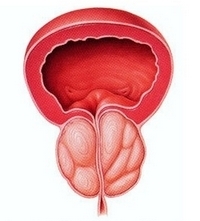
Prostatitis - inflammatory-degenerative lesion of the prostate
- Pain syndrome. It is localized in the area of the penis, pubis, anal opening, lower abdomen. On the nature of aching, pulling. The intensity of discomfort is higher with an acute current process.
- Pollackiuria. Frequent unproductive urge to empty the bladder. They appear both in the daytime and at night( although nighttime urge is more common for prostatic hyperplasia).
- Violations of the process of urination. The jet becomes flaccid, urination can be interrupted in the midst. The condition is explained by swelling and proliferation of the prostate gland.
- Erectile dysfunction. It develops as a result of a violation of the testosterone synthesis by the testicles, as well as the insufficiency of the contractile function of the prostate gland.
The indirect manifestation is the impossibility of a normal conception( relative infertility).
Proctitis
Proctitis manifests as a typical symptomatic complex:
- Intensive pain in the lower abdomen. They can give in the lower back, testicles, penis.
- Dysfunction of the defecation process. Most often there are diarrhea, a little more often - constipation.
- Tenesmus is a false urge to empty the bowels.
- Dyspeptic phenomena, such as heartburn, nausea, heaviness in the abdomen.
Proctitis is often confused with a typical colitis of the intestine. It is impossible to distinguish one disease from another "by sight".
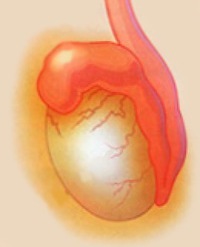
Orchitis - testicular inflammation
Orchitis
( Main article: Orchitis)
- Pain in the testicles. They are characterized by high intensity. They have a dull, shooting character. Localization is typical.
- Hyperemia of the scrotum. The scrotum becomes red, swollen, especially at the site of the lesion.
- Increased body temperature. Hyperthermia reaches significant levels of 38-40 degrees.
- Soreness at the time of erection, ejaculation.
So only the acute form of the disease manifests itself. In chronic course, the symptomatology is lubricated and is represented only by a minor pain syndrome.
Epididymitis
( Main article: Epididymitis)
In general, the clinical picture is similar to the picture of orchitis. It is possible to distinguish these diseases only through specialized studies.
Cystitis, urethritis
( Main articles: Cystitis, Urethritis)
Shown:
- Pain in lower abdomen.
- Frequent urges to urinate.
- Burning and cutting in the process of emptying the bladder.
- Frequent false urges of an imperative nature.
- In some cases, polyuria is possible - an increase in daily diuresis.
Pyelonephritis
( Main article: Pyelonephritis)
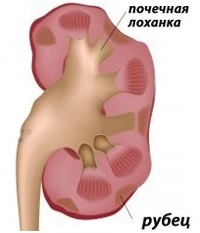
Pyelonephritis - inflammation of the renal tubular system of the kidneys
Inflammation of the renal pelvis. Clinical manifestations:
- Back pain and pelvic pain.
- Polyuria.
- Hematuria.
- Piuria( in some cases pus comes out with urine).
As far as can be judged from the above list, the symptoms of various diseases are pathognomonic enough. But you should not try to determine the nature of chronic pelvic pain by yourself. The doctor's consultation is mandatory. It is important to note. Not always the syndrome of chronic pelvic pain is of an organic nature. Often the origin of pain is purely psychosomatic( so-called neurogenic pains).
Classification of syndrome
Classification of chronic pelvic pain syndrome in urological practice is based on the origin of the pathological process:
- Type A. Inflammatory syndrome.
- Type B. Syndrome of non-inflammatory genesis.
Diagnostic measures
Doctors and urologists are engaged in diagnosis and treatment of chronic pelvic pain syndrome. It is more preferable to treat this problem with the urologist-andrologist. At the primary consultation, a specialist conducts an oral survey, assesses the patient's complaints, collects an anamnesis of life. A great diagnostic value is the fact of hypothermia in the past, unprotected sex, a sexually transmitted disease. To exclude changes from the side of the prostate gland, the doctor resorts to finger research of the organ. So, a specialist can assess the size and structure of the prostate. If there is inflammation - this is an unpleasant study, nevertheless, it will have to endure.
Next, a series of instrumental and laboratory studies is required. Among the most informative survey methods:
- General blood test. It makes it possible to identify the presence or absence of inflammation at the generalized level.
- General analysis of urine.
- Prostate juice analysis. One of the most informative studies. By composition, density, volume, substance reactions, doctors can detect the presence of a lesion of the prostate gland. Inflammation is manifested by leukocytosis, in the juice can be detected pathogenic microorganisms.
- Taking a smear from the urethra.
- Ultrasound examination of pelvic organs. Including testes, appendages, prostate.
- MRI diagnostics. Appointed rarely and only in controversial cases. Sometimes it is not so easy to distinguish the syndrome of chronic pelvic pain from the neoplastic process. The point in the question is called tomography.
- Cystoscopy, urethroscopy. Minimally invasive endoscopic examination of the bladder and urethra, respectively.
Here are just the basic studies. In fact, other methods can be appointed. Everything is decided at the discretion of the treating specialist.
Methods of therapy

For chronic pelvic pain, mainly medical treatment is used.
Methods of treatment, mainly, conservative, medicamentous. Appointed medicinal products:
- Anti-inflammatory non-steroidal origin.
- Antibacterial drugs. It is necessary to fight the infectious agent( if any).
- Spasmolytics. They alleviate the pain syndrome, removing the spasm of the smooth muscles of the internal organs( including the muscles of the prostate gland, the bladder).
- Phytomedication( Prostamol, etc.).
- Preparations of animal origin( Vitaprost and its analogs).
Prevention methods
Chronic pelvic pain is easier to prevent than to treat later. It suffices to listen to a few simple tips:
- You need to wear free underwear.
- All sex should be protected: no one canceled contraception.
- Subcooling should be avoided.
- All sources of chronic infectious disease have the potential to affect the genitourinary system. They need to be sanitized in time.
Syndrome of chronic pelvic pain is a multifaceted phenomenon. In order to identify the root cause of the condition, you need to undergo a comprehensive examination from a specialized specialist. This is the only way to expect a favorable outlook.
Read about: How to take tests for sexual infections
Recommended for viewing:


